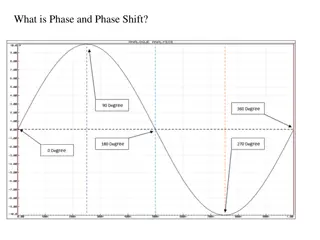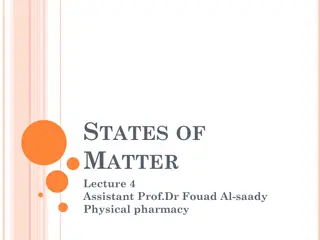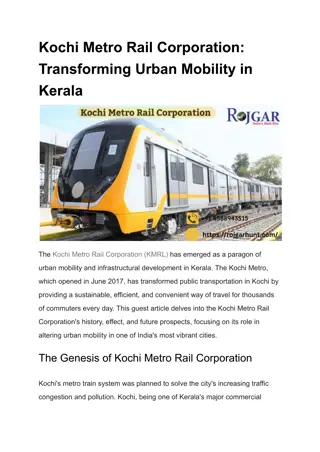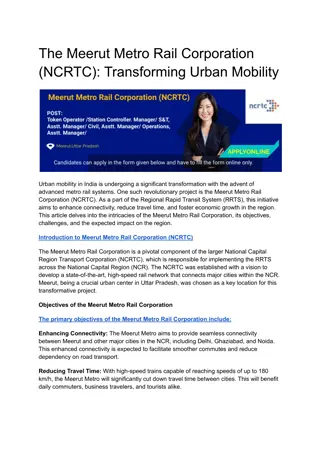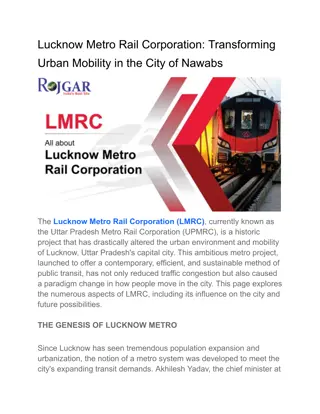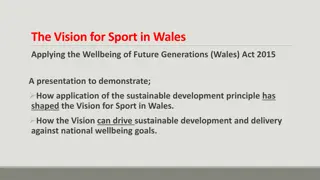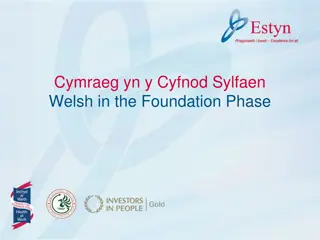Transformation of South Wales Metro Phase 2
The South Wales Metro Phase 2 project aims to bring significant changes to the transportation system, including potential improvements to the bus network, reduced congestion, and benefits for both residents and businesses. It focuses on enhancing connectivity, increasing rail patronage, and promoting modal shifts towards more sustainable forms of transportation, ultimately leading to socio-economic advancements and positive environmental impacts.
Download Presentation

Please find below an Image/Link to download the presentation.
The content on the website is provided AS IS for your information and personal use only. It may not be sold, licensed, or shared on other websites without obtaining consent from the author.If you encounter any issues during the download, it is possible that the publisher has removed the file from their server.
You are allowed to download the files provided on this website for personal or commercial use, subject to the condition that they are used lawfully. All files are the property of their respective owners.
The content on the website is provided AS IS for your information and personal use only. It may not be sold, licensed, or shared on other websites without obtaining consent from the author.
E N D
Presentation Transcript
Context Inputs Outputs Outcomes Impact Transport: Potential changes to bus network Reduced congestion for remaining road users Journey time reliability benefits to remaining road users ERDF Output Indicator - Reduced CO2 emissions due to reduced car kilometres / new rolling stock Improved air quality Safety and other environmental benefits, including noise Socio-economic: i) Resident: Jobs: Reduced economic inactivity / unemployment people moving into workforce People taking up higher paid jobs People working more hours Leisure: Increased leisure spend in locations along the line (e.g. Caerphilly, Pontypridd, and Merthyr but also risk of leakage from these areas) as well as Cardiff / Cardiff Bay Improved access to / from major events Tertiary education and training, health, and business: minor impacts ii) Business: Cardiff and Key Regional Centres Access to larger labour market Productivity benefit Access to a larger customer base Increased business turnover Non-Cardiff More money spent locally due to higher local wages versus more money spent in Cardiff More money spent due to visitors (leisure and business) Encourages business resilience, formation, and expansion iii) Community: Higher levels of inward investment Land and property development and value impacts Increased in-migration Enhanced town centre vitality public realm improvements Lower levels of social deprivation Reduced outmigration Increased productivity (agglomeration) Wales wide Cross Cutting Themes Transport supply side Slow line speeds Long sections of single track Poor reliability / punctuality Long dwell times at stations, especially when ramp employed for disabled users Outdated rolling stock and diesel, giving rise to higher emissions Limited number of available rolling stock units can contribute to short forming of services (where a service operates with fewer carriages than booked) Reliability issues due to short forming Insufficient seating capacity on some services Current infrastructure prevents direct connection to CB Shortage of train stabling locations / impact of Canton Depot on Cardiff West Junction Lack of level boarding at stations/between train and platform Basic facilities at some stations Capacity constraints on the road network Air Quality Transport user perspective: Low service frequency on northern section of CVLs (max two trains per hour) Long journey times on CVLs (>1 hour) which are not competitive with the private car Overcrowding at peak times / approaches to city / inability to get on Poor reliability /punctuality Interchange required to access CB Limited bus network between Heads of the Valleys and Cardiff Difficulty accessing station / trains for persons with reduced mobility and other affected groups Personal security issues at some stations Poor passenger experience at some stations High traffic volumes on approaches into Cardiff leading to long and unreliable journey times for all road users Socio-economic: Negative socio-economic picture for residents, businesses, and communities Improved connectivity to key services, including employment, health and education, cultural and heritage, arts, sports and recreation derived from: Reduced in vehicle journey times Aberdare and Merthyr Lines: New direct connections to Cardiff Bay Loss of direct connections to Barry Island / Bridgend Rhymney Line: New direct connections to Barry Island and Bridgend Loss of direct connection to Penarth Cotyton-City New direct connections to Penarth Loss of direct connections to Radyr Enhanced frequency Increased line capacity Increased passenger seating capacity Accessibility improvements through relevant legislative compliance and station design Improved journey quality through newer vehicles, enhanced services, and improved station facilities Enhanced reliability Increased resilience through greater operational flexibility Additional stabling capacity and operational benefits at Cardiff Central due to Taff s Well depot Increased rail patronage New trips (commuting, education, leisure, visitor, including for persons with reduced mobility and other affected groups) Change in trip destination Modal Switch: Reduced bus patronage Reduced car trips More walking / cycling as part of journey versus reduced walking / cycling for short trips in urban areas Redistribution of rail patronage between Ebbw Vale and Rhymney Line ERDF Inputs: ERDF investment in nine operations Welsh Government/ TfW / DfT Inputs: Electrification New rolling stock East Wales ERDF Result Indicator: Total passengers using public transport between key urban links ERDF Output Indicators: Intermodal facilities created or improved Total length of reconstructed or upgraded railway line Land Developed West Wales ERDF Result Indicator: Number of people aged 16 and over within 15, 30, and 45-minute travel time of a key employment centre between 7am and 9am on a Tuesday by public transport (average across six key centres)
Context Inputs Outputs Outcomes Impact Transport: Potential changes to bus network Reduced congestion for remaining road users Journey time reliability benefits to remaining road users Reduced CO2 emissions due to reduced car kilometres / new rolling stock Improved air quality Safety and other environmental benefits, including noise Socio-economic: i) Resident: Jobs: Reduced economic inactivity / unemployment people moving into workforce People taking up higher paid jobs People working more hours Leisure: Increased leisure spend in Pontypridd and Merthyr as well as Cardiff / Cardiff Bay Improved access to / from major events Tertiary education and training, health, and business: minor impacts ii) Business: Cardiff and Key Regional Centres Access to larger labour market Productivity benefit Access to a larger customer base Increased business turnover Non-Cardiff More money spent locally due to higher local wages versus more money spent in Cardiff More money spent due to visitors (leisure and business) Encourages business resilience, formation, and expansion iii) Community: Higher levels of inward investment Land and property development and value impacts Increased in-migration Enhanced town centre vitality Lower levels of social deprivation Reduced outmigration Increased productivity (agglomeration) Wales wide Cross Cutting Themes Transport supply side Slow line speeds Long sections of single track Outdated rolling stock and diesel, giving rise to higher emissions Limited number of available rolling stock units can contribute to short forming of services (where a service operates with fewer carriages than booked) Reliability issues due to short forming Insufficient seating capacity on some services Insufficient seating capacity on some services Current infrastructure prevents direct connection to CB Capacity constraints on the road network ERDF Inputs: West Wales Operational Programme: Infrastructure works to allow the service to be increased to four trains per hour between Porth and Treherbert and along the length of the Aberdare and Merthyr Lines. Other improvements in anticipation of the electrification of the line, including installation of dynamic passing loops; advanced works to improve platform accessibility; improvements to lineside fencing and route works; a new platform and footbridge at Quaker Yard; installation of foundations and masts / support structures in preparation for electrification. East Wales Operational Programme: Infrastructure enhancements to the railway line between CQS and CB to provide increased line capacity, allowing direct services from TAM to Cardiff Bay Track improvements to facilitate increased trains per hour (20+ in each direction) and direct access to Cardiff Bay through platforms 4 and 5. 146 million Welsh Government /TfW / DfT Inputs: Electrification New rolling stock Improved connectivity to key services, including employment, health and education, cultural and heritage, arts, sports and recreation derived from: Reduced in vehicle journey times New direct connections to Cardiff Bay Loss of direct connections to Bridgend / Barry Island Enhanced frequency Increased line capacity Increased passenger seating capacity Improved journey quality through newer vehicles and enhanced services Enhanced reliability Increased resilience through greater operational flexibility Increased rail patronage New trips (commuting, education, leisure, visitor, including for persons with reduced mobility and other affected groups) Change in trip destination Modal Switch: Reduced bus patronage Reduced car trips More walking / cycling as part of journey versus Reduced walking / cycling for short trips in urban areas Transport user perspective: Low service frequency on northern sections of TAM Lines i.e. north of Abercynon / Pontypridd (max two trains per hour) Long in-vehicle journey times on TAM Lines (>1 hour) which are not competitive with the private car Overcrowding at peak times / approaches to city / inability to get on Interchange required to access CB Limited bus network between Treherbert, Aberdare, and to a lesser extent Merthyr and Cardiff High traffic volumes on radial approaches into Cardiff leading to long and unreliable journey times for all road users ERDF Output Indicator: Intermodal facilities created or improved ERDF Output Indicator: Total length of reconstructed or upgraded railway line Socio-economic: Negative socio-economic picture for residents, businesses, and communities
Context Inputs Outputs Outcomes Impact Transport: Potential changes to bus network Reduced congestion for remaining road users Journey time reliability benefits to remaining road users Reduced CO2 emissions due to reduced car kilometres / new rolling stock Improved air quality Safety and other environmental benefits, including noise Socio-economic: i) Resident: Jobs: Reduced economic inactivity / unemployment people moving into workforce People taking up higher paid jobs People working more hours Leisure: Increased leisure spend in Caerphilly as well as in Cardiff Improved access to / from major events Tertiary education and training, health, and business: minor impacts ii) Business: Cardiff and Key Regional Centres Access to larger labour market Productivity benefit Access to a larger customer base Increased business turnover Non-Cardiff More money spent locally due to higher local wages versus more money spent in Cardiff More money spent due to visitors (leisure and business) Encourages business resilience, formation, and expansion iii) Community: Higher levels of inward investment Land and property development and value impacts Increased in-migration Enhanced town centre vitality Lower levels of social deprivation Reduced outmigration Increased productivity (agglomeration) Wales wide Cross Cutting Themes Transport supply side Slow line speeds Long sections of single track Long dwell times Outdated rolling stock Limited number of available rolling stock units can contribute to short forming of services (where a service operates with fewer carriages than booked) Reliability issues due to short forming Insufficient seating capacity on some services Insufficient seating capacity on some services Capacity constraints on A469 and A470 Basic facilities at some stations ERDF Inputs: Infrastructure works to allow the service to be increased to four trains per hour along the full length of the line to Rhymney as well as other improvements to the railway in anticipation of the electrification of the line, including track improvements; platform alternations in the vicinity of Rhymney Station; improvements to lineside fencing and route works; and installation of foundations and masts / support structures in preparation for electrification works 29.6 million Welsh Government / TfW / DfT Inputs: Electrification New rolling stock Improved connectivity to key services, including employment, health and education, cultural and heritage, arts, sports and recreation derived from: Reduced in vehicle journey times New direct connections to Barry Island and Bridgend Loss of direct connection to Penarth Enhanced frequency Increased line capacity Increased passenger seating capacity Improved journey quality through newer vehicles and enhanced services Enhanced reliability Increased resilience through greater operational flexibility Increased rail patronage New trips (commuting, education, leisure, visitor) Change in trip destination Modal Switch: Reduced bus patronage Reduced car trips More walking / cycling as part of journey versus Reduced walking / cycling for short trips in urban areas Redistribution of rail patronage between Ebbw Vale Line and Rhymney Line Transport user perspective: Low service frequency on northern section of Rhymney Line (max two trains per hour) Long in-vehicle journey times on Rhymney Line (>1 hour) which are not competitive with the private car Overcrowding at peak times / approaches to city / inability to get on Limited bus network between Rhymney and Cardiff High traffic volumes on A469 and A470 leading to long and unreliable journey times for all road users Personal security issues at some stations Poor passenger experience at some stations ERDF Output Indicator: Total length of reconstructed or upgraded railway line Socio-economic: Negative socio-economic picture for residents, businesses, and communities
Context Inputs Outputs Outcomes Impact Transport: Minor contribution to programme level impacts Socio-economic - Focused on groups most affected by changes in physical accessibility i) Resident: Jobs: Reduced economic inactivity / unemployment people moving into workforce People taking up higher paid jobs People working more hours Leisure: Increased leisure spend in locations along the line (e.g. Caerphilly, Pontypridd, and Merthyr) as well as Cardiff / Cardiff Bay Improved access to / from major events Tertiary education and training, health, and business: minor impacts ii) Business: Cardiff and Key Regional Centres Access to larger labour market Productivity benefit Access to a larger customer base Increased business turnover Non-Cardiff More money spent locally due to higher local wages versus more money spent in Cardiff More money spent due to visitors (leisure and business) Encourages business resilience, formation, and expansion iii) Community: Higher levels of inward investment Land and property development and value impacts Increased in-migration Enhanced town centre vitality public realm improvements Lower levels of social deprivation Reduced outmigration Increased productivity (agglomeration) Wales wide Cross Cutting Themes Transport supply side Lack of level boarding at stations/between train and platform Basic facilities at some stations Long dwell times at stations, especially when ramp employed for disabled users Increased rail patronage New trips (commuting, education, leisure, visitor, including for persons with reduced mobility and other affected groups) Change in trip destination Modal Switch: Reduced bus patronage Reduced car trips More walking / cycling as part of journey versus Reduced walking / cycling for short trips in urban areas Reduced in vehicle journey times due to reduced dwell times Accessibility improvements through , relevant legislative compliance and station design Improved journey quality enhanced station facilities ERDF Inputs: 55 stations considered for improvements (18 in East Wales and 37 in West Wales) including level boarding, new seating, shelters, customer information systems and help points 46.9 million (24 million in East Wales and 22.9 million in West Wales) Transport user perspective: Difficulty accessing station / trains for persons with reduced mobility and other affected groups Personal security issues at some stations Poor passenger experience at some stations ERDF Output Indicator: Intermodal facilities created or improved Socio-economic: Some equality groups socially excluded
Context Inputs Outputs Outcomes Impact Operation will enable the delivery of a new depot capable of housing new CVL rolling stock for the TAM Lines Reliability benefit - the new depot at Taff's Well will enable direct access to the TAM Lines, rather than having to send rolling stock through Cardiff Central. This will present a reliability benefit particularly in advance of the morning peak period when trains need to be positioned ready for their first service into Cardiff. Improvements to Taff's Well Station environment Improvements to National Cycle Network Transport supply side Existing depot at Canton: constrained by capacity at Cardiff West junction has insufficient facilities / space to house and maintain new CVL rolling stock If no new depot, requirement for empty positioning runs at start and end of operating day ERDF Inputs: Land purchase and site clearance New road access via a new bridge, rail access / egress at Taff's Well, which will require relocation of the existing Taff's Well station platforms, and a new footbridge over Taff's Well Station, including improvements to the National Cycle Network (Taff Trail) 41.5 million None facilitator of wider TAM package None facilitator of wider TAM package Transport user perspective: None ERDF Output Indicator: Intermodal facilities created or improved ERDF Output Indicator: Land developed Socio-economic: None




